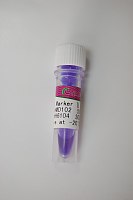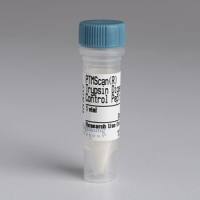Measurement of DNA Double-Strand Breaks with Giant DNA and High Molecular-Weight DNA Fragments by Pulsed-Field Gel Electrophoresis
互联网
348
Reactive oxygen species (ROS) such as hydroxyl radicals ( OH), superoxide anions (O2 − ) and hydrogen peroxide (H2 O2 ) have been shown to damage to chromosomal DNA and other cellular components, resulting in DNA degradation, protein denaturation, and lipid peroxidation (1 ,2 ). We know a little about the in vivo action mechanism of ROS produced by anticancer drugs and by X-ray irradiation on chromatin DNA in the nuclei of intact cells. DNA damage induced by ROS in vivo or in the cultured cell system is classified into singleand double-strand breaks and nucleotide base oxidative modifications (2 -4 ). The application of gel electrophoresis to the measurement of DNA doublestrand breaks has been described by some workers for DNA irradiated in vitro (5 -7 ). Double-strand breaks are generally thought to have a greater biological consequence than single-strand DNA breaks because they can lead directly to chromosomal aberrations, and more frequently to the loss of genetic information (6 ,8 ). Ionizing radiation such as X-ray and γ-ray are, in general, thought to produce OH radicals from water molecules in or around the target sites in the DNA, and these in turn attack DNA and break it down (1 ,3 ). In addition, the involvement of such radicals in the induction of apoptosis has been suggested in several cell lines (9 -12 ).









